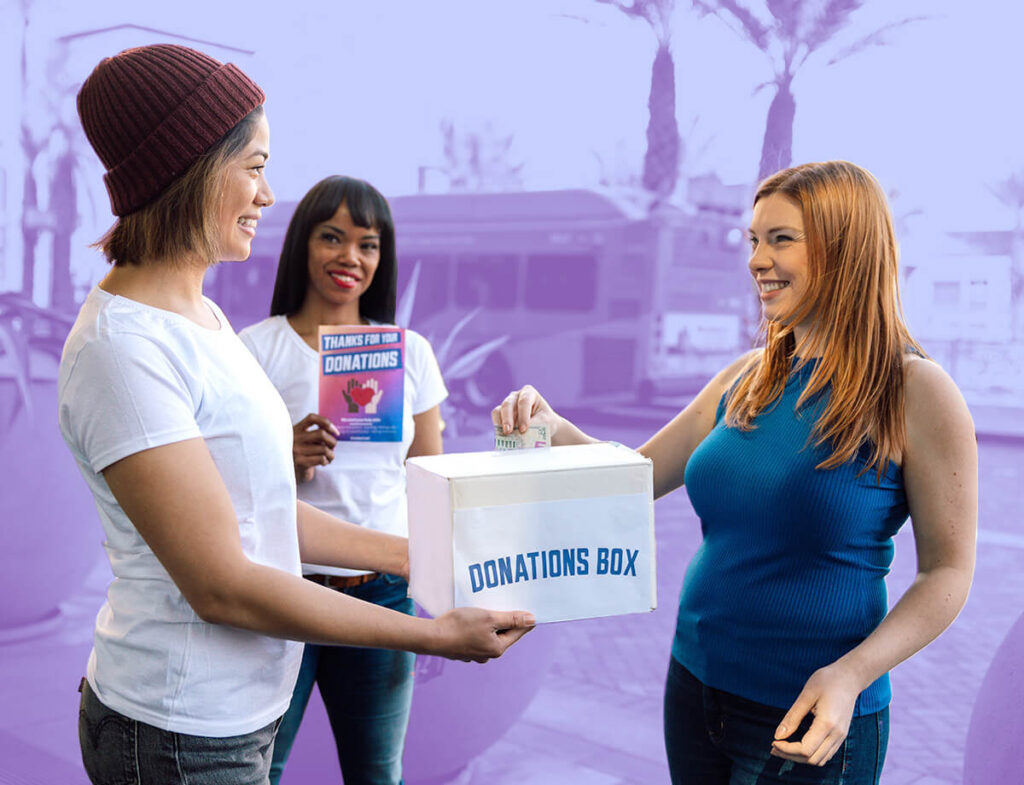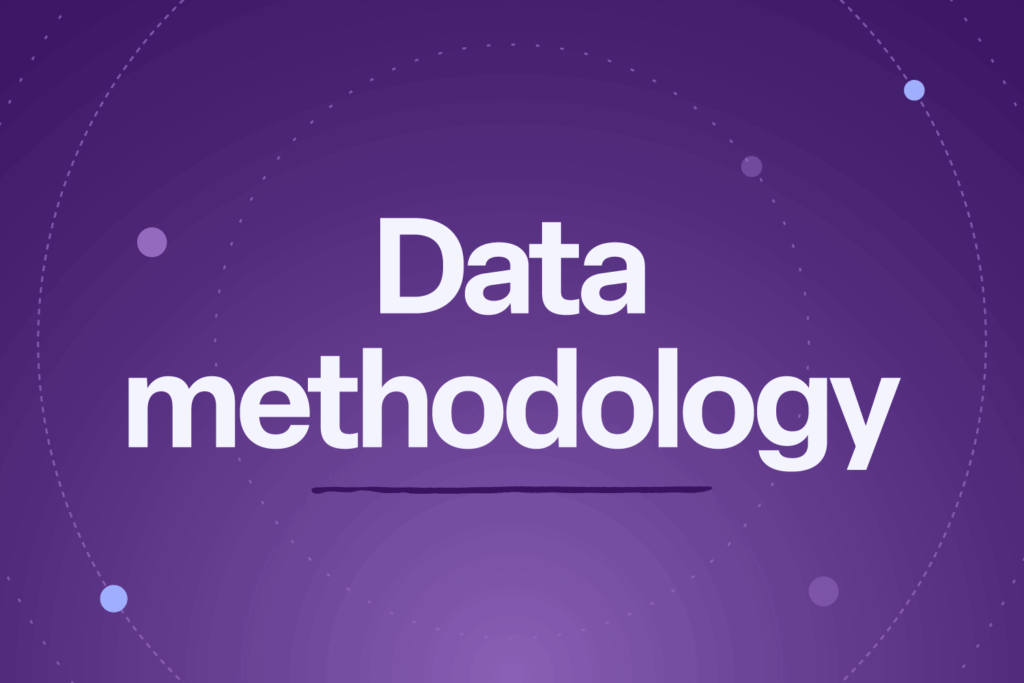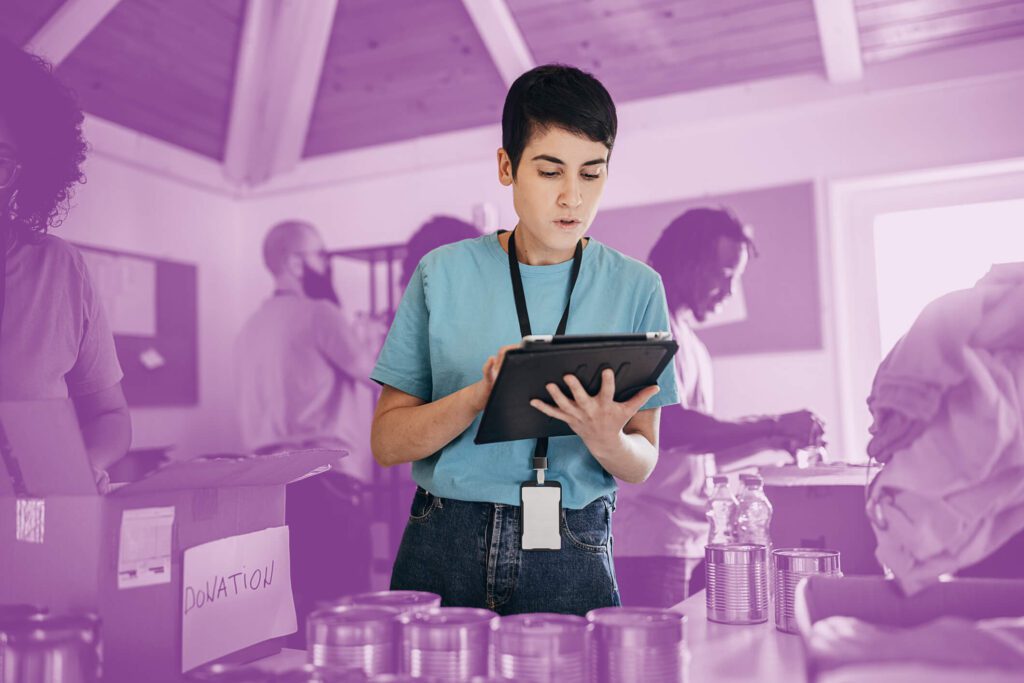How can we make charitable giving accessible to all?
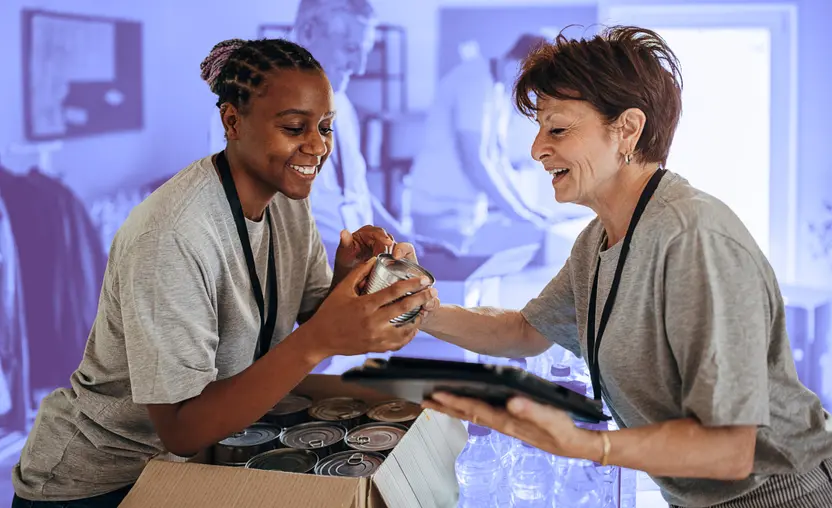
I believe technology can make the world a better place.
As chief revenue officer for Bonterra, I lead a team that builds profitable relationships to create lasting change. I know from experience that there is enough energy, financial interest, and momentum to spark a revolution in giving. But it will take a reimagining of how every individual can get involved.
In 2012, I used my talents as a support lead in tech to volunteer with Tech for Obama, an organization dedicated to the former president’s re-election. Our efforts proved successful: Unprecedented data utilization and targeted outreach contributed to the campaign’s victory and led to a major shift in how campaigns are won today.
This experience showed me something powerful—when you give people the right tools, they can make a huge impact. But not everyone has the same access to those tools. Not everyone’s got the time, the money, or the connections to jump in and give back.
And that’s a problem we need to fix.
Not only are nonprofits losing out on potential contributions, but people are losing out on the immense benefits of philanthropic work like increased feelings of happiness, a sense of community, and extended life span. Given that the U.S. giving rate has been stagnant for the last 50-plus years, it’s time to address the barriers keeping everyday people from getting involved in the causes they care about.
Donating time or money is not a luxury that should be limited to the top 10%, especially when need is at an all-time high. If, for instance, Bonterra meets its mission to increase giving to 3% of the U.S. GDP by 2033, an additional $583 billion dollars annually could relieve poverty, the burden of college tuition, or homelessness for an entire year.
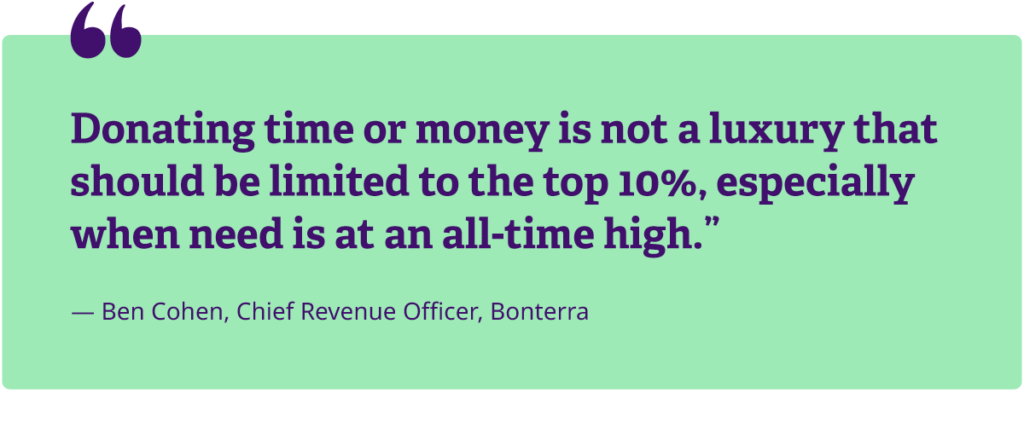
At Bonterra, these statistics fuel our ambition. They motivate us to partner with social good organizations to meet people where they are, providing the technology and tools to help everyone get involved. And I believe that if we work together, we can break down the barriers to giving with talent and technology.
The giving revolution
We’ve seen how tech can transform industries — now it’s time to use it to transform giving. Whether sophisticated data analysis, AI-fueled volunteer matching, transparent impact reporting, or virtual volunteer opportunities, innovation can turn the potential for social good into sustainable social giving.
But for busy people focusing on getting by – like most of the country – giving may not always be top-of-mind. It’s easy to fall into a pattern of linear thinking that keeps us from being active social citizens. We tend to think in terms of “when I achieve X, I can do Y.” This creates a mindset of putting off volunteering or donating to later in life. When we do have a little extra to give, we are advised to invest in stocks, rather than causes. We take much-needed time off, rather than use free hours to better our communities.
But there is great need now. And the benefits of the virtuous cycle and good feelings we attain by giving cannot be understated. They should be experienced by everyone. Given these challenges, social good organizations can lean on technology to reach more and do more with less.
Here are the three ways technology can aid in enabling giving for all:
1. Provide “micro” or “bite-sized” virtual volunteer opportunities
In the last two decades, we’ve seen microdonations take off. Crowdfunding platforms let people chip in as little as 25 cents, and those contributions add up. Why can’t we apply that same thinking to volunteering? We don’t need people to commit whole days at a time; even small opportunities can create big impact.
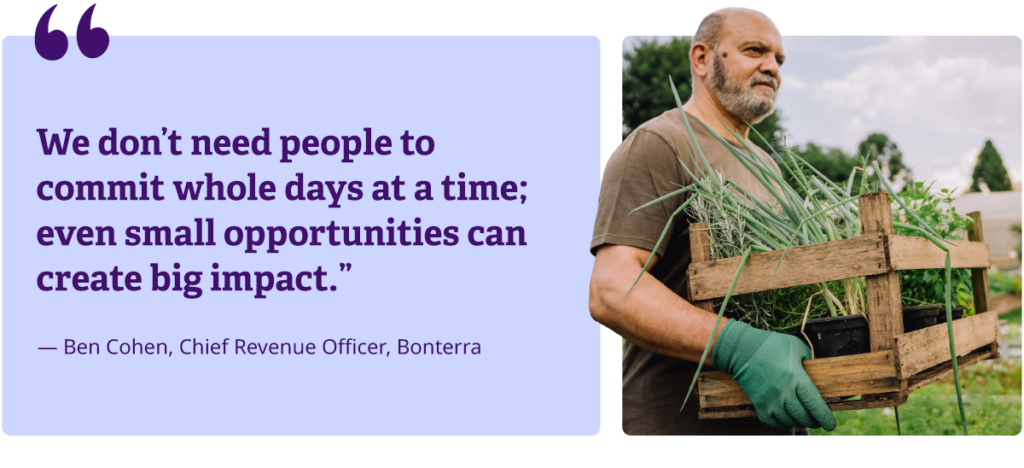
With the availability of virtual gathering software and digital platforms, the nonprofit sector should lean in and rethink traditional volunteer time blocks. Rather than committing to extended periods of time, organizations can offer “micro” or “bite-sized” volunteering opportunities. This approach allows people to contribute in times as short as 15 minutes, which could be utilized for tasks like sending emails or writing letters, phone or text banking, or sharing info on social media. Such flexibility accommodates the busy lives of modern volunteers, who might have limited time but still wish to make a difference.
The effect of more individuals volunteering — even in shorter bursts — could profoundly impact the philanthropy sector, propelling us closer to 3% by ‘33.
2. Match people’s skills to the causes they care about using AI
Let’s talk about another barrier: People often don’t know how or where to get involved.
Nearly 1.5 million 501(c)(3) nonprofits operate in the U.S. today, focusing on a huge spectrum of causes and targeting a range of communities. Depending on their size and resources, nonprofits may conduct local community outreach or social media campaigns. Some volunteers may find them through these efforts. But more often, they’re searching for opportunities based on their own abilities, passions, and time constraints. Both parties are working in silos, with the off chance of overlapping.
So how are volunteers and donors supposed to connect to the organizations that can use their talents and passions? That’s where AI comes in.
Operating in tandem with responsibly sourced user data, AI can redefine how volunteers and nonprofits find each other. This is one of many solutions Bonterra is working on, as the leader in AI for the greatest good. It will help “matchmake” and connect every person interested in creating positive change.
3. Cultivate long-term supporters using data, software, and predictive analytics
The third tool in our tech arsenal is data. We know that when people see the impact of their giving, they’re more likely to be long-term givers. But impact reporting needs to be clear, simple, and real-time. Research shows that updated, accessible, quantitative reporting on an organization’s impact leads to donor retention. With help from a data maturity model that tracks outcomes, manages outputs, and informs decision-making, nonprofits can accurately and easily demonstrate impact.
For some, time and mental energy remain key barriers to donating. Software that enables recurring and convenient donations simplifies the thought process of where and when to give. Self-service portals and social media-enabled donation pages make it easy for supporters to stay involved for years.
Using predictive analytics, organizations can even anticipate what keeps people engaged and tailor their experience accordingly. Whether it’s a personalized thank-you note or updates on the progress of a project they care about, technology lets nonprofit organizations make giving more personal and more meaningful. This automated process then frees up time for nonprofit staff to develop in-person connections and get to know an individual and their reasons for supporting the organization.
Let’s do more good
An untapped well of doers of good exists, but they’re often limited by circumstances beyond their control. With technology, organizations can enable giving in a way that works for everyone, providing small but impactful opportunities to give. It’s up to each nonprofit organization to use the talents, tools, and technology at their disposal to change systems for the better. And it’s up to every aspiring giver to ask themselves: What can I do with my time and skills? Which problems do I want my dollars and volunteerism to solve?
Bonterra’s mission is to enable our partners to optimize, innovate, and accelerate social good. If we can break down digital siloes, show impact, and drive efficient operations, we can empower each person to engage in the cycle of virtue that gives life meaning. And together, we’ll each use our talents — and technology — for good.
Giving & Matching
Work with Bonterra

